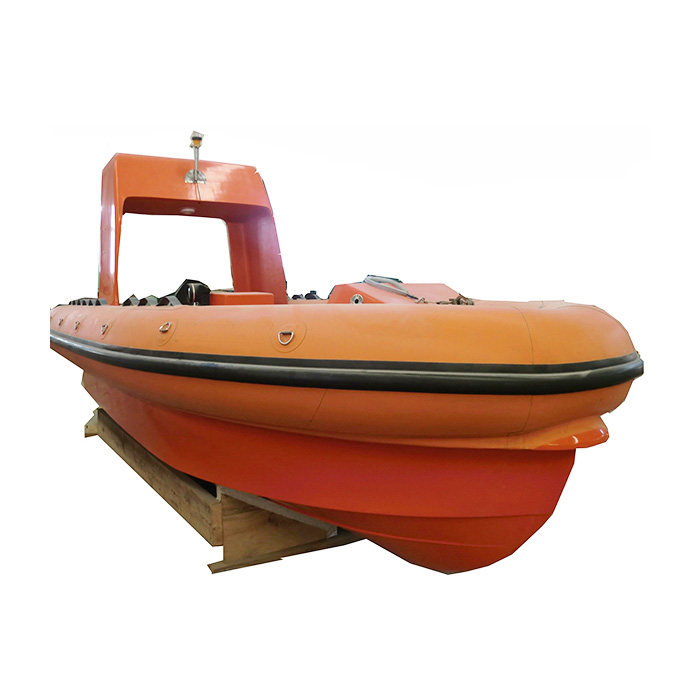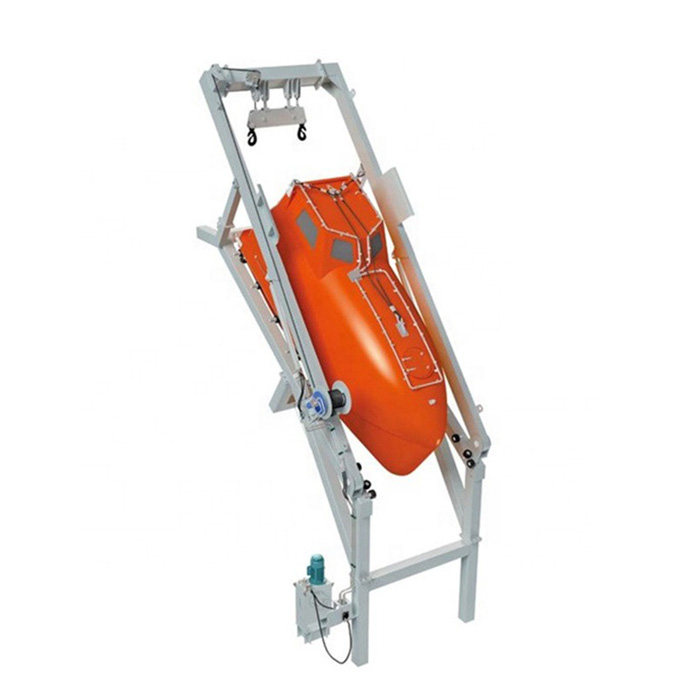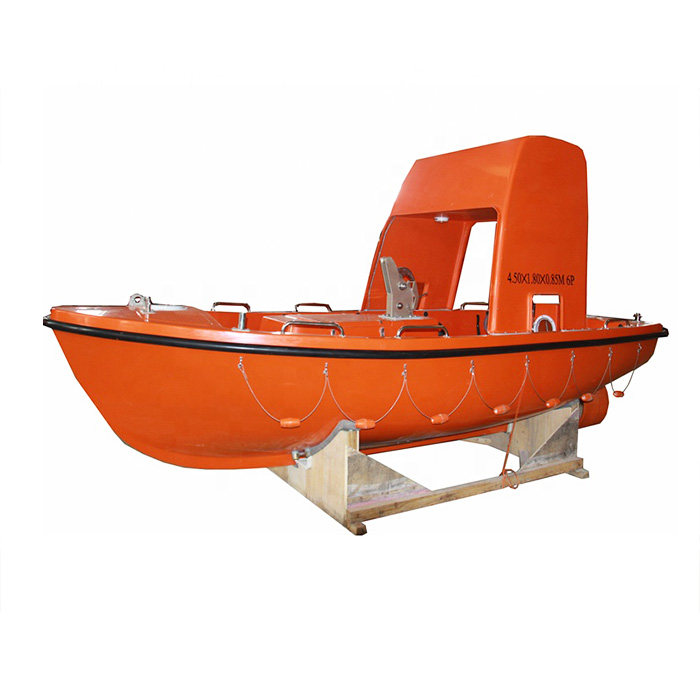Enclosed vs. Totally Enclosed Lifeboats: Choosing the Right Type for Your Vessel
Survival under extreme circumstances is what lifeboats aim to offer during maritime emergencies. Functionally, lifeboats provide different levels of protection, key features and uses. Enclosed and totally enclosed lifeboats provide different types and levels of protection and comfort. Consequently, this article highlights the specific functions of each type of lifeboat provides and the circumstances under which each is required, with specific reference to the advantages offered by different type of life boats.
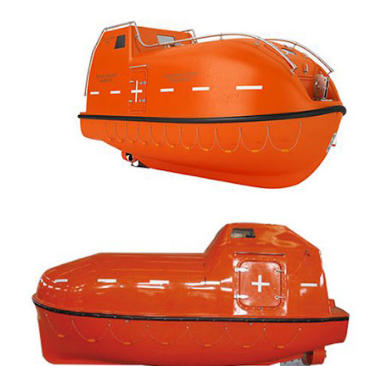
Table of Contents
What are Enclosed Lifeboats
An enclosed lifeboat is an entire self-contained survival craft that provides partial protection from the elements. Enclosed life boats offer only partial protection and cannot be used during extreme emergencies. Enclosed lifeboats feature an open canopy or hull and offer ventilation, so that hulls are not completely enclosed.
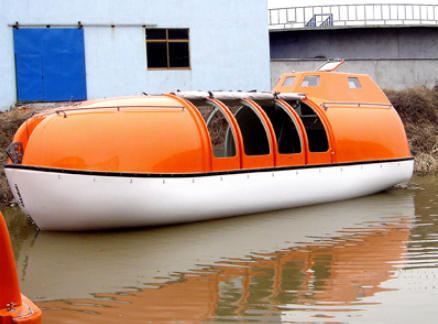
Advantages
- Cost Efficiency: Compared to totally enclosed lifeboats, enclosed lifeboats are cheaper to produce and easier to upkeep. This affordability benefi ts vessels that do not require the complete safety that totally enclosed lifeboats provide.
- Lightweight and Compact: These lifeboats are less heavy and more space efficient. This is advantageous for smaller vessels where constraints due to weight and space are crucial considerations.
- Ventilation and Comfort: In terms of enclosed lifeboats, they do not totally close off airflow. This level of ventilation does provide some comfort. In less extreme conditions, having some airflow prevents heat and suffocation from occurring.
- Ease of Deployment: Compared to larger, more complex totally enclosed lifeboats, enclosed lifeboats are easier to deploy. Their weight and maneuverability contribute to more rapid and efficient evacuation.

Limitations
- Limited Protection in Extreme Conditions: Enclosed lifeboats are not sealed, which is why they do not provide complete protection in extreme conditions. They are not designed for heavy seas or submersion, which is why they do not protect in extreme weather. In the case of flooding or capsizing, safety is compromised with enclosed lifeboats due to their lack of complete closure.
- Threats of Water Ingress: Enclosed lifeboats might not be completely watertight and therefore are susceptible to water ingress if the lifeboat becomes submerged or takes on an excess of water which may jeopardize the safety of the people in it.
- Inability to Supply for Long-Term Survival: Totally closed lifeboats are equipped to provide survival supplies for long periods of time, out of the enclosed lifeboats, and several survival supplies are not as advanced as the totally enclosed lifeboats. Safety supplies are provided and there are survival provisions, however, they may prove insufficient for long-term survival in pressured environments.
- External Factors Impairing Air Quality: Enclosed lifeboats provide ventilation, however in extreme weather conditions the ventilation may become insufficient which may cause discomfort or even suffocation within the enclosed lifeboats. This may even be worse in the warm, damp, humid environments with stagnant air.
Common Applications
- Cruise Ships: due to the moderate weather, because large amounts of people may need to be evacuated. These lifeboats offer the necessary protection for these scenarios and do not need the full protection of fully enclosed models. Other ships, operating in worse conditions, are fitted with more robust, fully enclosed models.
- Cargo Vessels: Less prominent cargo ships that function in regions having predictable weather use enclosed lifeboats. These boats cost less and are less complex and costly than complex lifeboat system and offer enough shelter and safety for the crew during emergencies.
- Offshore Oil Platforms: Enclosed life boats are used as part of the emergency evacuation system in offshore oil drilling and exploration. For platforms in less severe weather conditions and in relatively calm seas during drilling, the lifeboats are safe, practical and cost effective.
- Ferries and Passsenger Vessels: Enclosed lifeboats are also used for these vessels and they are safe as they allow passengers to be sheltered in the boats and offer a relatively simple way to be deployed during emergency evacuations.
- Fishing Vessels: Enclosed lifeboats are also available and used in these vessels. These lifeboats offer safety and shelter to the crew during emergencies when the vessel is in moderate seas and predictable weather.
- Military and Research Ships: During calmer and controlled operations, some military and research operations also utilize enclosed lifeboats. These vessels also have smaller crews, and enclosed lifeboats provide sufficient shelter during emergency situations.
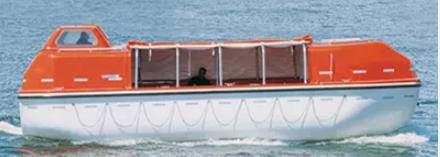
What are Totally Enclosed Lifeboats
A totally enclosed lifeboat is a fully enclosed, self-contained survival craft that fully protects its occupants from any potential dangers posed by the surroundings. They are crafted to withstand any hostile environment, including high sea turbulence, storms, or even complete submersion. They posses a hull structure that is completely enclosed and topped off with a roof. They also have escape hatches, ventilation, and survival provisions.
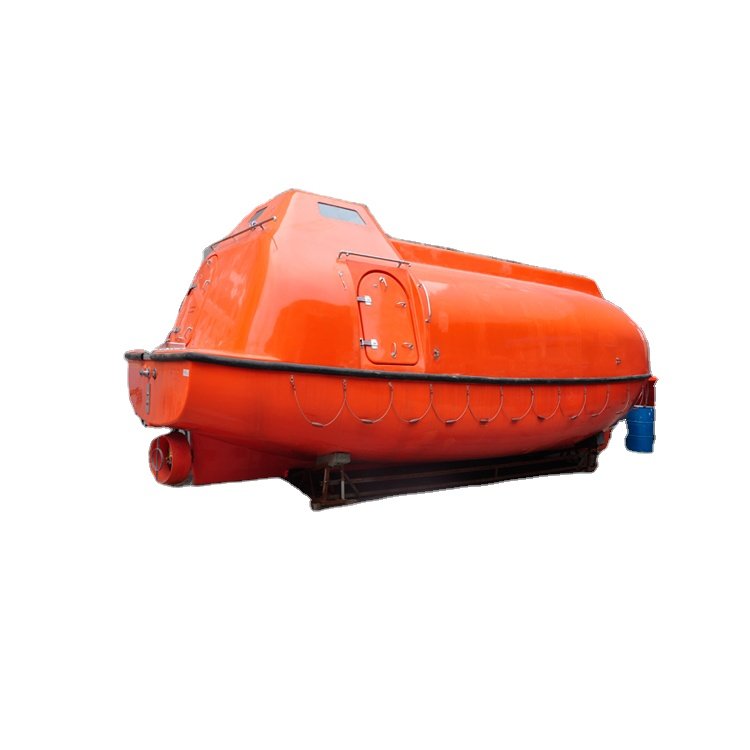
Advantages
- Protection from the Environment: A totally enclosed lifeboat is sealed to provide complete protection from extreme high winds, rain, freezing temperatures, and even submersion. Because the structure is watertight and even insulated, the vessel will remain afloat and completely dry, even in submersion.
- Safety in Extreme Conditions: Totally enclosed lifeboats are created for the worst of situations. Unlike enclosed lifeboats, which may provide a bit of safety, fully enclosed lifeboats can handle the worst of the worst. These lifeboats are perfect for situations when the distress risk of the vessel or emergency evacuations are high.
- Long-Term Survival Features: These lifeboats are equipped for the long haul. These lifeboats include long-lasting food, water, first-aid kits, fire extinguishers, and other emergency supplies to keep the crew and passengers until the rescue. These lifeboats can also include water desalination and temperature controls for added and extended survival.
- Escape Hatches and Ventilation: These lifeboats have escape hatches and planned ventilation systems to balance air. This system allows the lifeboat to handle long periods when the people and the lifeboat and remains fully enclosed.
- Regulatory Compliance: SOLAS (Safety of Life at Sea) makes the use of fully enclosed lifeboats on high-risk or open-water operations, larger vessels, and passenger ships compulsory. These lifeboats are made to the highest standard of safety, meeting regulations, and ensuring safety on the water.
- Increased Capacity: Compared to other lifeboat types, totally enclosed lifeboats are larger and roomy, allowing them to accommodate a larger number of people. This quality makes them suitable for large passenger vessels, commercial ships, or offshore oil platforms, where quick evacuation of large crowds becomes necessary.
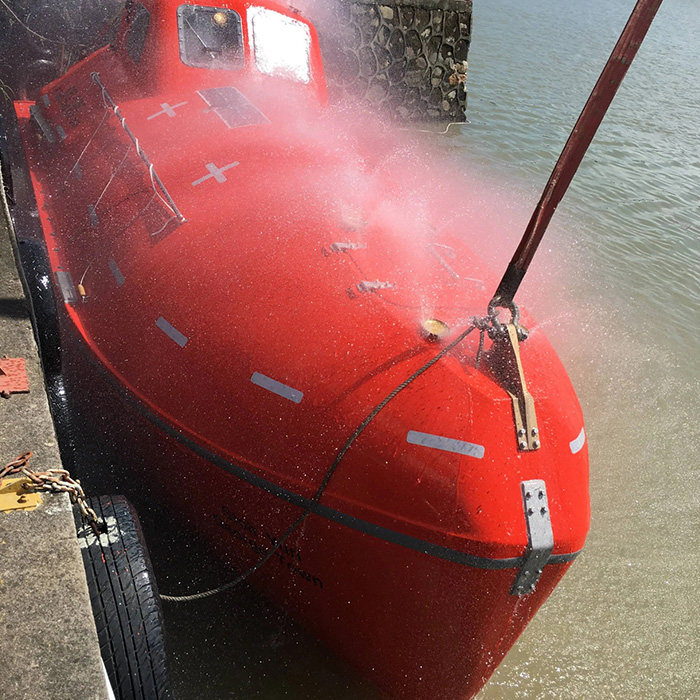
Limitations
- Increased Cost: Generally, totally enclosed lifeboats are more costly than other lifeboats due to the sophisticated design, new materials, and improved safety features. These costly refinements may translate to higher design costs, maintenance, and installation, making them a larger investment to shipowners and operators.
- Increased Weight: Totally enclosed life boats are bigger and heavier than the rest of the lifeboats which can be a negative attribute for smaller vessels that are operational on weight restrictions. Heavier lifeboats also need more powerful davit systems for deployment.
- More Complex Deployment: Although totally enclosed lifeboats are built for easy deployment, the need for advanced davit systems, and adequate training to facilitate quick and efficient emergency lifeboat deployment, means that the systems more complex.
- Space and Storage Considerations: Totally enclosed lifeboats require more storage space on the ship. This may be more difficult for ships with limited deck space. Like all lifeboats, fully enclosed lifeboats must be properly stored and accessible in an emergency.
- Limited Accessibility to Ventilation: Like all lifeboats, totally enclosed lifeboats require ventilation. However, to keep the extreme elements out, they must be sealed. Lifeboats may be uncomfortable for ventilation over long periods or in certain environments.
Common Applications
- Passenger Ships and Cruise Liners: During an emergency involving large numbers of people, they may need to be evacuated quickly and safely. Closed lifeboats are vital for cruise ships. They supply the protective lifeboats that are most needed in harsh weather or high seas situations.
- Cargo Vessels: Fully enclosed lifeboats are vital on large cargo vessels, contributing to the ship’s safety equipment. This becomes even more important when the ship becomes large for the maritime challenges. Closed lifeboats allow the crew to have a safe evacuation route.
- Offshore Oil Platforms and Rigs: Platforms and drilling rigs do most oil drilling offshore, which means they are remote and weather conditions can change. Sometimes, these places are required to have totally enclosed lifeboats. This is to make sure people can easily be evacuated in cases of extreme weather or equipment failure and provide safe evacuation in very risky environments.
- Military and Research Vessels: Military and research vessels operate in dangerous or hostile conditions, and they frequently employ totally enclosed lifeboats. These lifeboats guarantee that the crew can withstand extremely remote environments. These environments include, but are not limited to extremely hostile conditions like high waves, very low and high temperatures, and possible attack from hostile enemies.
- Fishing Vessels: Fishing vessels that operate in the open sea and are larger will have totally enclosed lifeboats. Part of the enclosed lifeboats also functions to provide and guarantee that crew members can be safely evacuated in emergencies. These boats also provide shelter for the crew in cases of sudden storms or other emergencies.
- Large Yachts and Superyachts: Luxury Private Yachts and Large Superyachts use fully enclosed lifeboats as a standard practice for safety and emergency evacuation of passengers and crew during a voyage, especially during rough sea crossings and remote regions. It provides peace of mind knowing that during emergencies, there is a reliable and safe evacuation option.
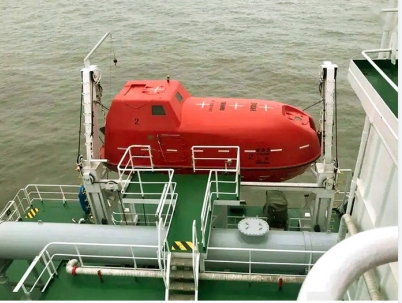
Key Differences Between Enclosed and Totally Enclosed Lifeboats
This comparison should help clarify the major distinctions between enclosed and totally enclosed lifeboats in terms of design, functionality, and suitability for different maritime environments.
| Feature | Enclosed Lifeboats | Totally Enclosed Lifeboats |
| Design | Partially enclosed with some ventilation. | Fully sealed with no external openings. |
| Protection Level | Offers partial protection from wind, rain, and cold. | Provides complete protection from the environment, including submersion. |
| Flood Resistance | Limited protection from water ingress. | Fully watertight and resistant to flooding or capsizing. |
| Ventilation | Basic ventilation through openings or gaps. | Advanced ventilation systems for fresh air supply. |
| Escape Options | May have open sections or limited escape routes. | Equipped with escape hatches and sealed exits for evacuation. |
| Capacity | Smaller, generally for fewer people. | Larger, designed for more passengers and crew. |
| Deployment | Easier and faster deployment in moderate conditions. | Requires advanced davit systems for heavier, larger boats. |
| Applications | Used on smaller vessels, moderate weather conditions. | Required on large ships, offshore platforms, and in extreme conditions. |
| Cost | Generally more affordable. | Higher cost due to advanced design and materials. |
| Weight | Lighter and easier to handle. | Heavier and bulkier, requiring stronger lifting equipment. |
| Long-Term Survival | Suitable for short-term survival situations. | Equipped for long-term survival with full provisions and shelter. |
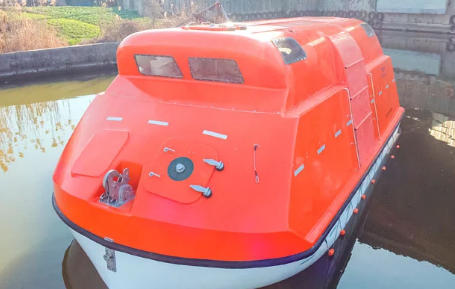
Key Factors to Consider for Choosing Between Enclosed and Totally Enclosed Lifeboats
1. Environmental Factors and Risk Evaluation
Environmental conditions that a vessel operates is one of the key determinants on the choice between an enclosed and a fully enclosed lifeboat. In the case of a vessel operating in relatively watertight seas with mild conditions most of the time, the lifeboat enclosed would be adequate. Enclosed lifeboats would be adequate in protection from wind and rain as well as cold with the exception of areas where extreme weather is highly probable.
Yet, for ships crossing open water, dealing with offshore oil platforms, or being in isolated locations with extreme weather conditions, being in offshore oil platforms, or being in locations with extreme weather more often than not, the most suitable option is an enclosed lifeboat. Capsizing or flooding conditions, these lifeboats are completely sealed. They are also self-sufficient in providing the required isolation by being completely sealed, ensuring that passengers and crew are protected, even in extreme conditions. Fully in closed lifeboats are designed with no windows which completely minimize the risk of water and weather contamination and provide the best protection.
2. Vessel Type and Size
The type and size of the vessel also play a crucial role in determining which type of lifeboat is appropriate. Larger passenger ships, cargo vessels, and offshore platforms that carry a substantial number of people often require totally enclosed lifeboats. These boats have the capacity to accommodate more people, and their complete protection is necessary for the safety of large groups during an evacuation.
Smaller vessels, like fishing boats, yachts, or some cargo ships, may not require the same level of protection that totally enclosed lifeboats deliver. For these vessels, totally enclosed lifeboats may be unnecessary since they add considerable cost and weight, but enclosed lifeboats do provide shelter and safety during emergencies. Enclosed lifeboats are generally more appropriate for vessels with fewer passengers to evacuate and that are working under calmer conditions.
3. Survival and Safety Provisions
Another important factor to consider when deciding between enclosed and totally enclosed lifeboats concerns the lifeboat’s survival provisions. Since totally enclosed lifeboats are built for long-term survival, they carry a variety of survival provisions including food, water, and first aid materials needed for extended periods. These lifeboats help in situations when rescue could be delayed; they are most appropriate for vessels that operate in more remote, off-shore regions.
Enclosed lifeboats are constructed for short-term use only. They do have safety features, but they are designed for use in emergencies of shorter duration. Comfort and safety for short-term evacuations are readily available, but the limited supplies and equipment on the lifeboats indicate that passengers and crew need to be rescued in a short time. Otherwise, they will be stranded with little hope of survival.
4. Regulatory Requirements and Compliance
The type of lifeboats required on different categories of vessels is governed by international maritime regulations, including those drawn up by the International Maritime Organization (IMO). Other regulations include the Safety of Life at Sea (SOLAS). These regulations demand that vessels meet set safety standards which vary based on the size of the ship, the number of people onboard, and the type of waters the ship navigates.
SOLAS regulations state that larger vessels or those working in high-risk areas must utilize totally enclosed lifeboats in order for the vessel to abide by high safety standard requirements. These regulations are in place to make sure the crew and passengers are safe under the worst maritime circumstances. However, for smaller vessels that operate in calmer seas, the regulations state that enclosed lifeboats may be used in compliance with the minimum safety requirements for their operations.
5. Cost and Budget Considerations
Another important factor to consider for choosing between partially enclosed and totally enclosed lifeboat is cost. Regarding lifeboats, totally enclosed ones are more costly than enclosed lifeboats due to the more sophisticated design, extra features, and larger capacity. Also, enclosed lifeboats use more expensive materials that must be engineered for use under extreme conditions which drive up costs for both manufacture and upkeep.
On the other hand, although enclosed lifeboats provide essential protection, they are less costly in both initial investment and maintenance. For vessels in less severe weather conditions and with fewer passengers to evacuate, an enclosed lifeboat is a more affordable option that still passes safety requirements.
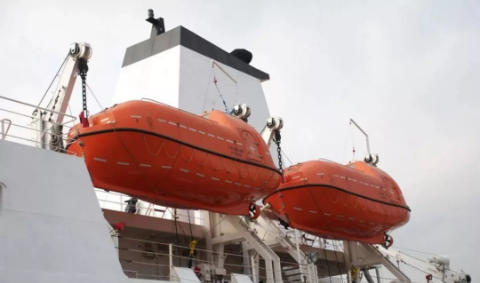
6. Weight and Space Considerations
The dimensions and mass of lifeboats influence the practicality of their storage and deployment. Totally enclosed lifeboats need more room on the vessel and more powerful davit systems for deployment as they are larger and heavier. For larger vessels, this is usually not an issue as these ships have the capacity to accommodate heavier lifeboats.
However, anchored to a weight, deck space, and overall weight limit smaller vessels may favor enclosed lifeboats. These lifeboats are generally lighter and more compact, facilitating storage and deployment. Less mass is also a benefit for smaller ships or vessels operating in tight conditions where overall weight capacity is a concern.
7. Deployment and Launching Systems
The more advanced design in deployment and launching systems for lifeboats is yet another consideration. These systems are a response to the need for sophisticated davit systems which are necessary for the safe and efficient launching of freefall totally enclosed lifeboats as they are large, and heavy and impose increased complexity in deployment. These systems are engineered to manage heavier loads and are calibrated to guarantee safe lifeboat deployment in an emergency.
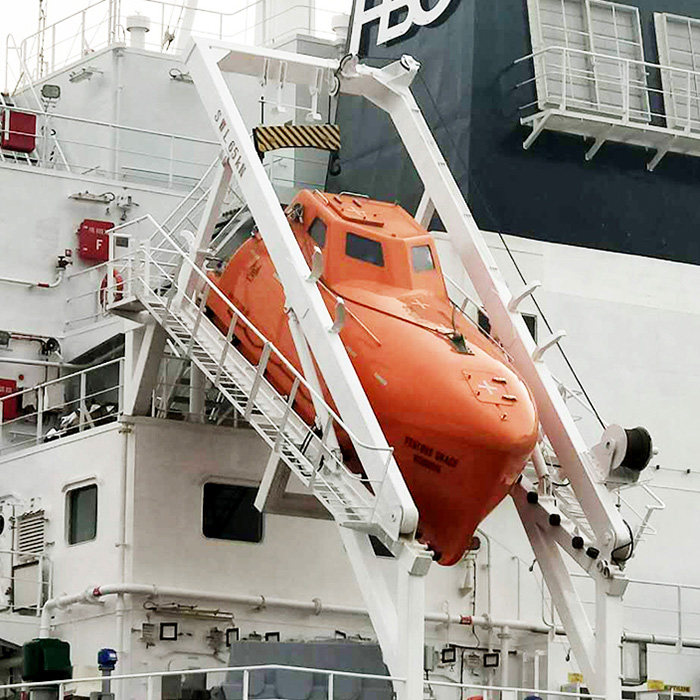
Conversely, enclosed lifeboats can be deployed more easily and more swiftly. Enclosed lifeboats can use simpler davit systems because they are lighter and smaller. This makes enclosed lifeboats well-suited to vessels where rapid and simple evacuation is important, with safety equipment designed to reduce deployment time and effort.
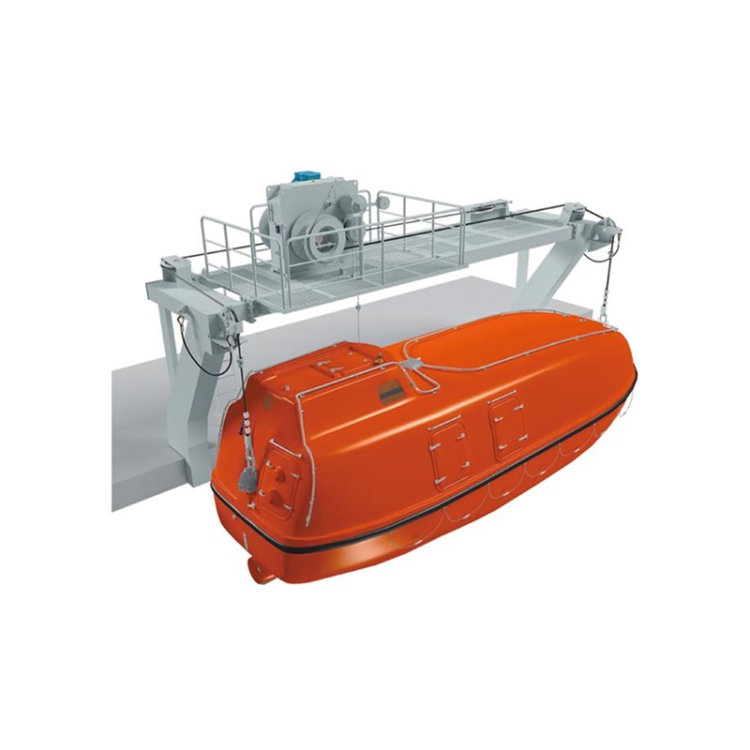
Summary
- Enclosed lifeboats are most suitable for smaller vessels or for ships working in more tranquil waters where the chances of severe weather or rough seas are low because they are cheaper and simpler to use in those environments.
- For large ships, offshore platforms, and vessels in remote or dangerous environments, totally enclosed lifeboats are necessary. For long-distance voyages and more high-risk areas, their capacity to shield people from severe conditions makes them the best option.
Final Thoughts
Understanding the differences between enclosed and totally enclosed lifeboats helps maritime operators improve their vessels’ safety and the chances of survival for their passengers and crew in an emergency. Central to this is the deployment of totally enclosed lifeboats, which, alongside other safety systems, ensures all passengers remain shielded and protected from the elements.



